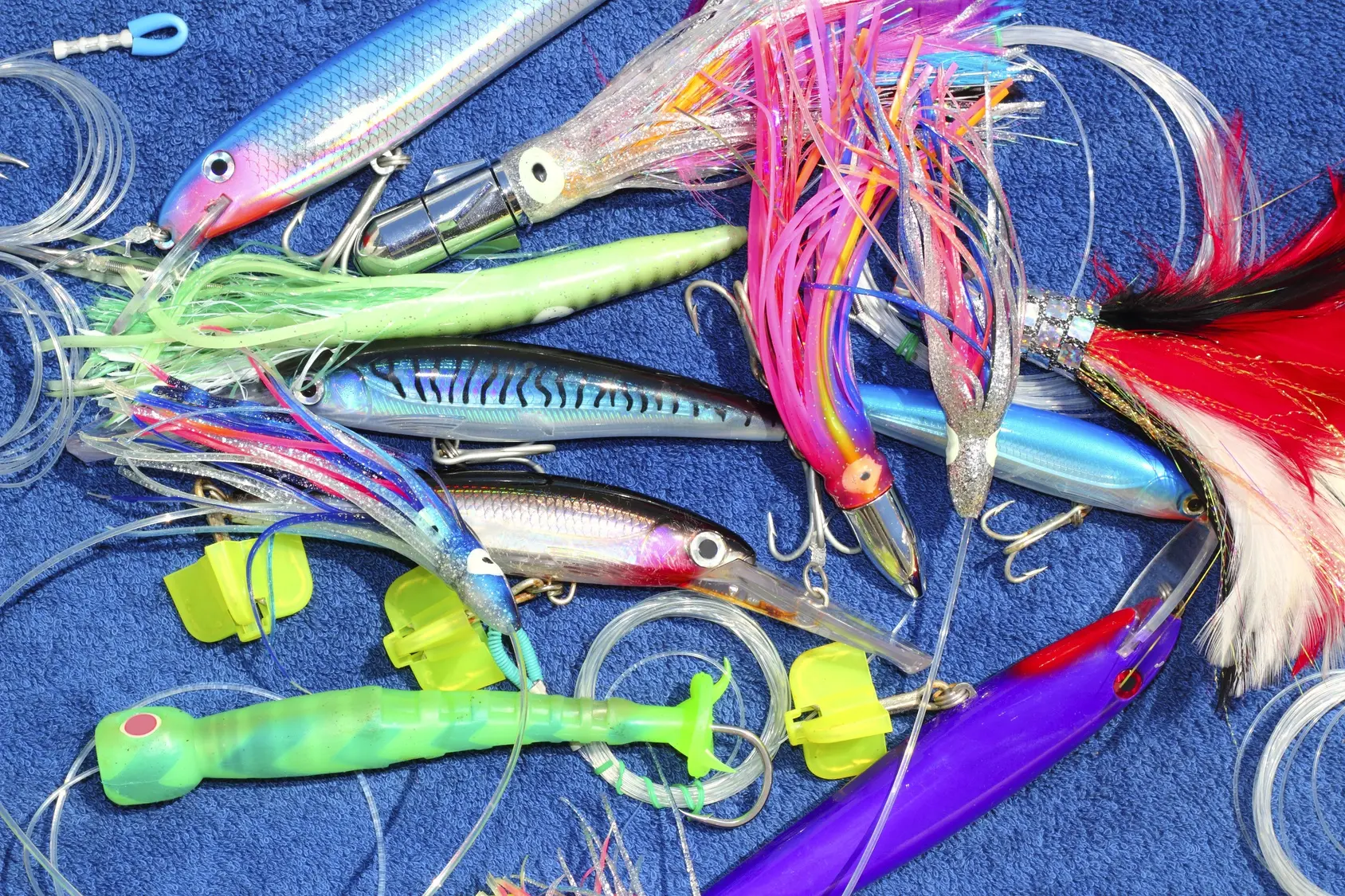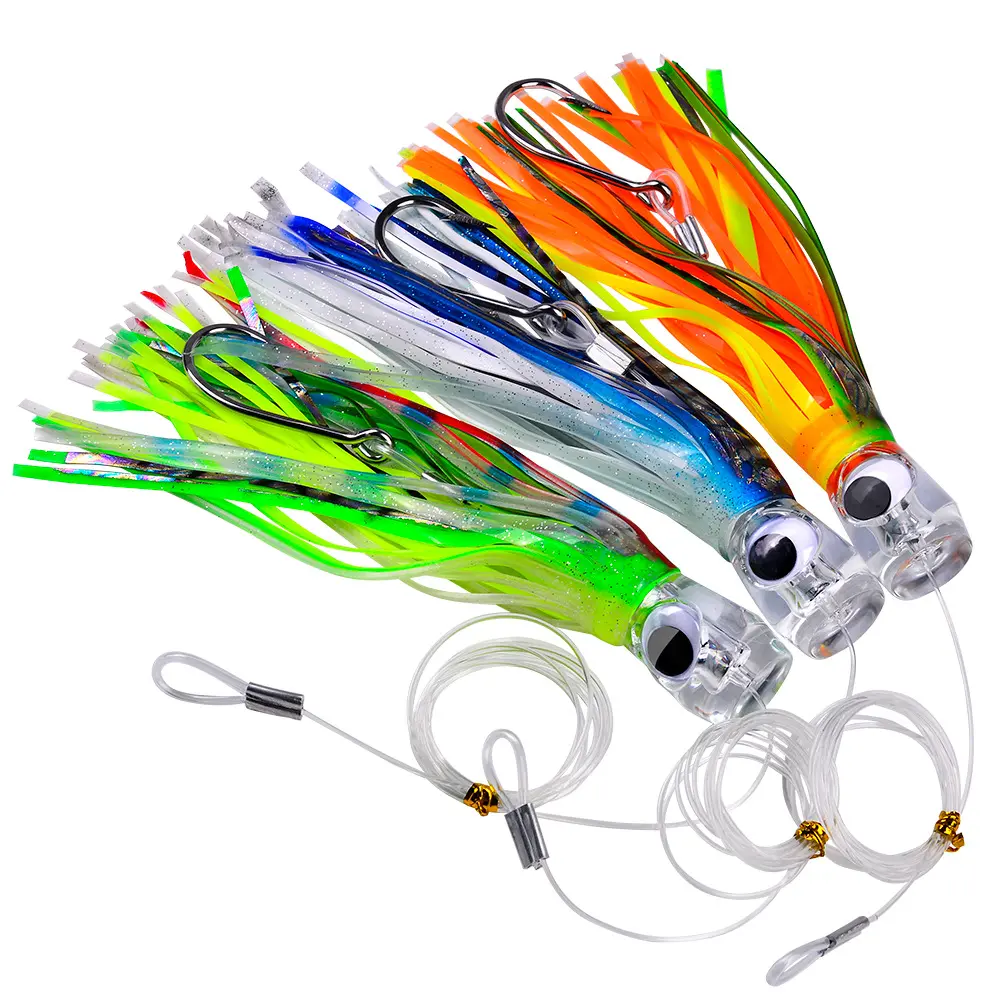Nighttime saltwater fishing often requires different bait choices compared to daytime fishing. Many predatory fish are more active and feed aggressively during the darkness. Here are some popular bait options for saltwater night fishing:
1. Cut Bait:
Using cut bait for saltwater fishing at night can be highly effective, as it releases scent into the water, attracting predatory fish. Here’s how you can prepare and use cut bait for night fishing:
1. Selecting Bait:
Choose fresh and oily fish for cut bait, as they release a strong scent. Mullet, mackerel, herring, and squid are popular choices. The goal is to use bait that is attractive to the specific species you’re targeting.
2. Cutting Technique:
Cut the bait into chunks or strips. The size of the cut bait will depend on the size of the fish you’re targeting. Larger chunks may attract bigger predators, while smaller strips might entice smaller species.
3. Use Sharp Hooks:
Ensure your hooks are sharp to increase your chances of hooking the fish. Depending on the size of the cut bait, use appropriately sized hooks. Circle hooks are a good choice, as they often result in better hook sets.
4. Rigging:
Use a rig suitable for the fishing conditions and the targeted species. For example, a fish-finder rig or a Carolina rig can be effective. Make sure the cut bait is securely attached to the hook.
5. Adding Extra Scent:
Consider adding additional scent to your cut bait. This can be accomplished by applying fish attractants or using bait enhancers. This extra scent can further attract fish to your bait.
6. Weighting the Rig:
Depending on the depth and current in your fishing area, you may need to add weight to your rig to keep the cut bait at the desired depth. Egg sinkers or split shot weights can be added to the leader.
7. Adjusting Depth:
Experiment with the depth at which you present your cut bait. Some fish may be feeding near the surface, while others may be closer to the bottom. Adjust your rig accordingly until you find the most productive depth.
8. Patience and Observation:
Night fishing often requires patience. Allow the scent of the cut bait to disperse in the water, and be observant for any signs of fish activity. Pay attention to changes in the water, such as ripples or disturbances, which could indicate fish feeding.
2. Live Bait:
Using live bait for saltwater fishing at night can be highly effective, as many predatory fish are more active during low-light conditions. Here are some popular live bait options for night fishing in saltwater:
1. Nightcrawlers:
Nightcrawlers, also known as earthworms, are effective for various species, including flounder, redfish, and trout. They can be fished on the bottom or under a popping cork.
2. Shrimp:
Live shrimp are versatile and attract a wide range of saltwater species. Hook them through the tail or just behind the head, and let them swim naturally.
3. Crabs:
Small crabs, such as fiddler crabs or small blue crabs, can be excellent for species like sheepshead and redfish. Use a small hook and allow the crab to move naturally.
4. Pinfish:
Pinfish are a popular baitfish in many saltwater areas. They can be caught with a small baitfish trap and then used whole or cut into chunks to attract larger predatory fish.
5. Mullet:
Live mullet are excellent for targeting larger predators like snook, tarpon, and sharks. Hook them through the lips or tail and allow them to swim freely.
6. Menhaden (Pogies):
Menhaden, also known as pogies, are oily baitfish that attract a variety of saltwater species. Hook them through the nose or behind the dorsal fin.
7. Threadfin Herring:
Threadfin herring are another popular live bait for saltwater fishing. They can be effective for a variety of species, including snook, tarpon, and kingfish.
8. Sardines and Pilchards:
These small baitfish are commonly used for live bait in saltwater. Hook them through the nose or behind the dorsal fin and allow them to swim naturally.
9. Anchovies:
Live anchovies can be effective for species like tuna and king mackerel. Use a small hook and allow them to swim freely.
3. Lures with Glow or Light Features:
Using lures with glow or light features for saltwater fishing at night can be effective in attracting predatory fish. The added visibility in low-light conditions can make these lures stand out and entice strikes. Here are some types of lures with glow or light features that you might consider for night fishing:
1. Glow-in-the-Dark Soft Plastic Baits:
Soft plastic baits, such as swimbaits or jerkbaits, often come with glow-in-the-dark properties. These lures can imitate various prey and are effective for species like snook, redfish, and trout.
2. Glow Jigs:
Jigs with glow paint or bodies can be productive for bottom fishing. You can tip them with cut bait or use them on their own to attract species like flounder and sheepshead.
3. Light-Up Topwater Lures:
Some topwater lures come with built-in lights or reflective surfaces that create a flashy appearance on the water’s surface. These can attract attention from predatory fish like speckled trout, snook, and striped bass.
4. LED-equipped Lures:
Lures with built-in LED lights are designed to mimic bioluminescent prey. These lures can be effective for attracting a variety of species, including tuna, king mackerel, and tarpon.
5. Glowing Spoons:
Spoon lures with glow paint or tape can be effective for species like Spanish mackerel and bluefish. The fluttering action of spoons can attract fish in low-light conditions.
6. Lighted Bucktail Jigs:
Bucktail jigs with added LED lights can be particularly effective for attracting the attention of predatory fish like striped bass, fluke, and weakfish.
7. Luminous Crankbaits:
Crankbaits with a luminous or reflective finish can be effective for trolling or casting at night. The wobbling action combined with the added visibility can trigger strikes.
8. Glow Stick Attachments:
Some anglers attach small chemical glow sticks to their lures to add visibility. This can be a cost-effective way to enhance the appeal of your existing lures.
4. Squid:
Squid is a versatile and effective bait for saltwater fishing at night. It has a strong scent and texture that can attract a variety of predatory fish. Here are some tips on using squid for night fishing:
1. Whole Squid:
Fishing with whole squid is a common approach. You can rig it on a hook by passing the hook through the mantle (body) or by threading it through the body in a corkscrew fashion. This method is effective for species like striped bass, fluke, and sea bass.
2. Squid Strips:
Cut squid into strips to create a more streamlined presentation. Strips can be used on a variety of rigs, including high-low rigs and fish-finder rigs. This is a popular method for targeting species like flounder, weakfish, and snapper.
3. Squid Tubes:
Use squid tubes by cutting them into cylindrical sections. Thread these sections onto a hook or a bucktail jig. This method can be effective for species like bluefish, Spanish mackerel, and king mackerel.
4. Squid and Cut Bait Combo:
Combine squid with other cut bait for a potent combination. The combination of scents from both squid and fish can attract a wider range of predatory fish.
5. Squid on Jigs:
Rig squid on jigs or other artificial lures to add scent and attraction. The movement of the squid combined with the action of the jig can entice species like fluke, striped bass, and bluefish.
6. Chumming with Squid:
Use squid as part of a chumming strategy. Create a chum slick by cutting up small pieces of squid and letting them disperse in the water. This can attract various species to your fishing location.
7. Squid Imitation Lures:.
Consider using artificial lures that imitate the appearance and movement of squid. Soft plastic lures or jigs with squid-like designs can be effective for species like squid, cuttlefish, and octopus.
8. Scented Squid Baits:
Soak your squid bait in additional scent attractants or fish oils to enhance its effectiveness. This can make the bait even more appealing to predatory fish in low-light conditions.
5. Bioluminescent Lures:
Bioluminescent lures are designed to mimic the natural light emitted by certain marine organisms, attracting predatory fish in low-light conditions. These lures are especially effective for saltwater night fishing. Here are some types of bioluminescent lures and tips on using them:
1. Soft Plastic Lures:
Soft plastic baits with built-in glow or bioluminescent properties can imitate the appearance of glowing prey in the water. This can be particularly effective for species like snook, redfish, and trout.
2. Glowing Shrimp Lures:
Shrimp imitations with built-in bioluminescence can be enticing for a variety of saltwater species, including sheepshead, flounder, and speckled trout.
3. Light-Up Topwater Lures:
Some topwater lures are equipped with LED lights or other light-emitting features. These lures can create a flashy and attractive display on the water’s surface, enticing strikes from species like snook and striped bass.
4. Glowing Jigs:
Jigs with glow paint or bodies can be effective for bottom fishing. These jigs can imitate the appearance of bioluminescent organisms near the seabed, attracting species like flounder and grouper.
5. Bioluminescent Crankbaits:
Crankbaits with a luminous or reflective finish can imitate the movement and appearance of bioluminescent prey. These lures can be effective for trolling or casting at night.
6. Light-Up Bucktail Jigs:
Bucktail jigs with added LED lights or reflective materials can be productive for attracting predatory fish like striped bass, weakfish, and bluefish.
7. Glowing Squid Lures:
Imitations of glowing squid, whether soft plastics or hard lures, can be effective for species that prey on squid, such as tuna, king mackerel, and mahi-mahi.
8. Chemiluminescent Lures:
Some lures use chemical light sticks or capsules to create a glow effect. These can be inserted into specially designed compartments within the lure. This type of lure can attract a variety of species.
6. Cut Mullet:
Mullet is a popular bait for many saltwater species. Cutting it into chunks or using strips can be effective, especially if mullet are present in the area.
7. Bloodworms:
Bloodworms are a favorite for many species, including striped bass. They have a strong scent that can attract fish in low-light conditions.
8. Chum:
sing a chum bag with fish parts or a commercial fish attractant can create a scent trail in the water, drawing in fish to your location.
Remember that the effectiveness of bait can vary based on the specific location, target species, and prevailing conditions. It’s always a good idea to ask local anglers or check with bait shops for recommendations tailored to the area you plan to fish. Additionally, regulations regarding bait types and sizes may apply, so be sure to check and comply with local fishing regulations.


